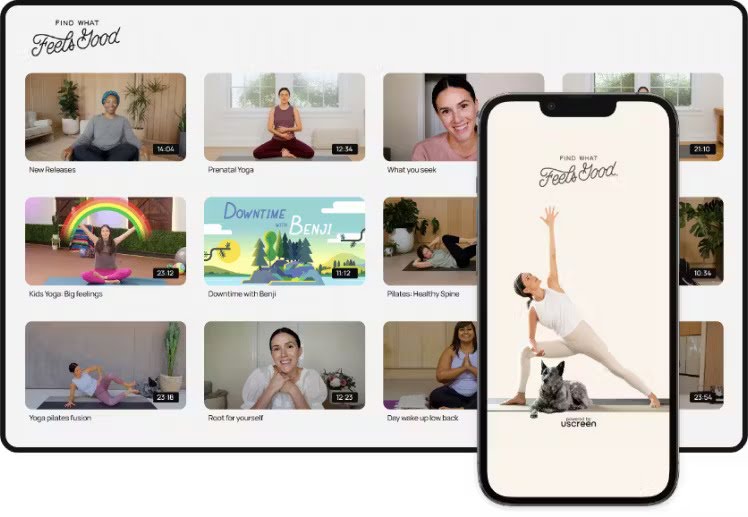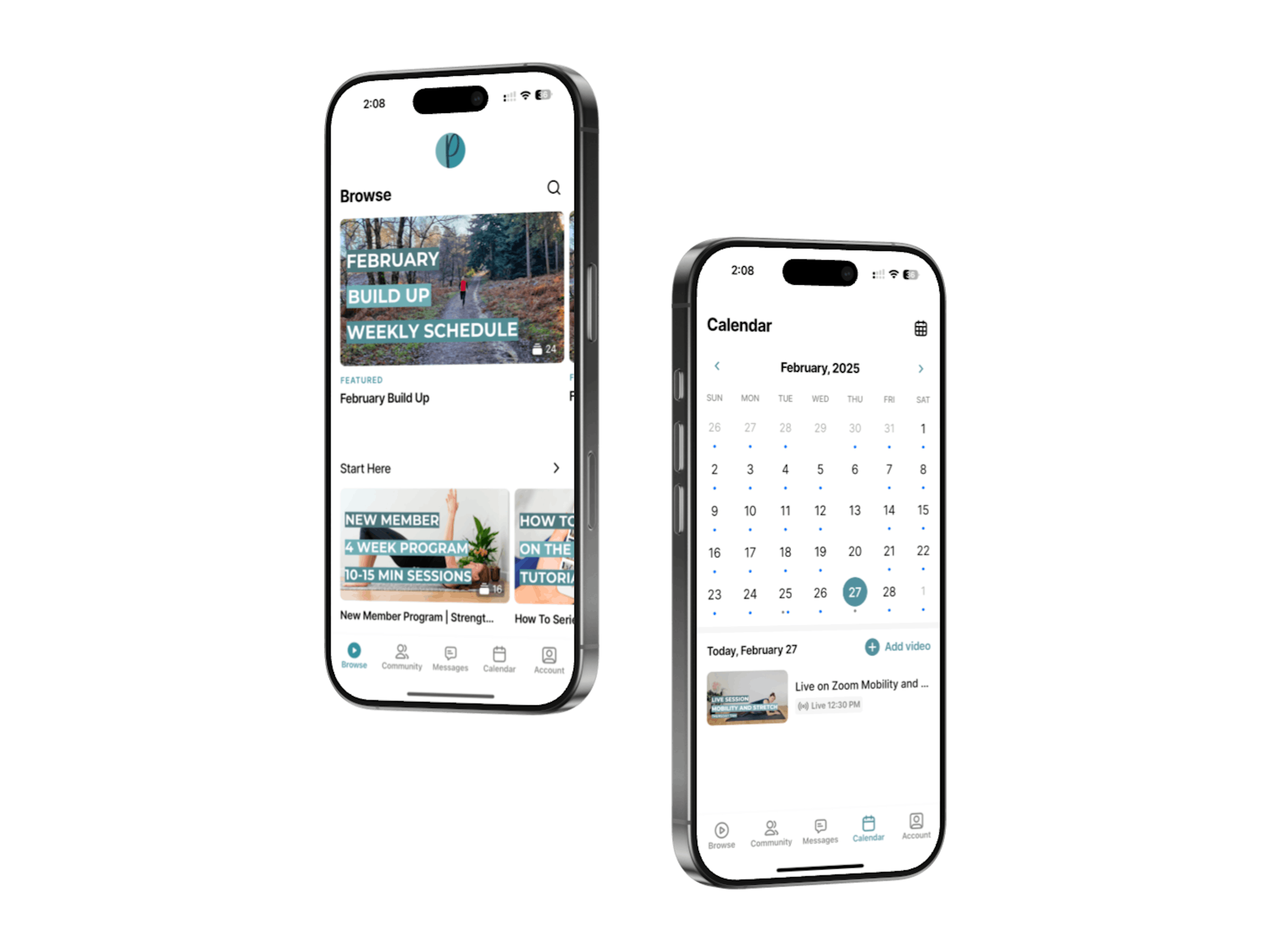There are a lot of confusing terms in the video monetization world. Do you know the difference between TVOD and SVOD? How about AVOD and PVOD? Are you familiar with hybrid approaches? Or when one model of monetization is better than another?
Transactional video on demand, or TVOD, is a very popular way of earning revenue from videos online. Let’s take a look at what TVOD is, how it differs from other ways of monetizing, the pros and cons of TVOD, and how to use it to start earning.
What is TVOD?
Transactional video on demand (TVOD) is a video monetization model that sees consumers paying a one-time fee to buy or rent access to a video.
If you’ve ever paid money to Apple TV to download a show, rented a movie from Amazon Prime, or watched a pay-per-view event on ESPN+, you’ve used TVOD. It can be used for shows, movies, documentaries, live streams, courses and any other kind of video content.
Here’s a quick comparison between transactional video on demand (TVOD), subscription video on demand (SVOD), advertising-based video on demand (AVOD), and premium video on demand (PVOD):
| Video on demand (VOD) model | Payments | Customer experience | Revenue |
|---|---|---|---|
| TVOD (transactional VOD) | One-time purchases | Pay only for desired content | Mid-range |
| SVOD (subscription VOD) | Subscription fees | Convenient, no-ads | High |
| AVOD (advertising-based VOD) | Ad revenue | Free access with ad interruptions | Low |
| PVOD (premium VOD) | One-time purchases, usually available to subscribers | Early access to new or special content | Variable |
How TVOD works
The process for transactional video on demand usually looks like this:
- A viewer finds a piece of content they’d like to watch. This could be a single episode of a show, an entire season of a show, a movie, a documentary, a live streamed event, or any other piece of video content.
- The viewer clicks “Buy,” “Rent,” or another option that indicates they’re getting access to the content now – or, in the case of a live streamed event, in the near future.
- The viewer enters their payment details or uses saved details.
- The viewer has access to the content forever (if they bought it), a limited time (if they rented it), or while it’s live (if it’s a pay-per-view event). Pay-per-view events may also become downloadable or watchable later.
It’s also worth noting that TVOD can be combined with other monetization models. We’ll cover the details soon.
TVOD vs. OTT
One term that we haven’t used yet is over-the-top, or OTT. If you’re new to the online video monetization world, these two terms might be confusing. Let’s break them down here:
- Over-the-top (OTT) is a delivery method for videos. OTT offers a direct line to your viewers without networks or platforms. It’s a very flexible model that provides a great user experience and can be monetized with TVOD, SVOD, and other methods.
- Transactional video on demand (TVOD) is a monetization model often used for videos delivered via OTT. Viewers pay a one-time fee for permanent or temporary access to videos or live streams.
What are some examples of TVOD platforms?
Many of the popular streaming platforms you’re already familiar with offer transactional video on demand via OTT apps:
- Amazon Prime
- Apple TV
- Google Play
- Fandango
- ESPN+
Many of these platforms combine TVOD with subscription video on demand (SVOD). For example, you can subscribe to Apple TV, which gets you access to the shows and movies produced by Apple. But there are lots of other shows and movies that you’ll need to pay to purchase or rent.
TVOD platforms for creators
If you’re a small video creator looking to earn revenue from your videos, you probably aren’t trying to get listed on a platform like Fandango or Amazon Prime. Fortunately, there are smaller video monetization platforms that help you make money on your content using TVOD.
Uscreen, for example, has helped over 4,000 creators succeed in monetizing their content. Not all of them use TVOD, but it’s a common way to earn. The best video on demand platforms offer multiple earning options, including transactions.
Benefits of TVOD
- Easy for viewers to commit: Because they don’t have to sign up for a monthly or annual subscription, it’s easier to get your videos in front of a wider audience.
- Lets people watch what they want: Not everyone wants to watch every video on a platform or from a particular creator, and this lets viewers choose.
- Higher single-item earnings than ad revenue: Even if you maximize your ad revenue, you probably won’t earn more than $20 per 1,000 views. TVOD means every view earns you money.
- Doesn’t require a ton of content to start: If you can get high-value videos in front of an audience, you could start with a single piece of content and still make money (this is often the case if creators are selling courses).
- Provides a premium experience: Creating your own TVOD website shows viewers that you’re invested in a premium user experience, adding to the value of your videos.
Drawbacks of TVOD
- Not great for retention: Some viewers will buy or rent a single piece of content and not come back for more; this makes generating recurring revenue difficult.
- Earnings can be unpredictable: Unless you have a very predictable pipeline of new viewers (if you’ve built a predictable YouTube marketing funnel, for example), it may be difficult to predict how much you’ll make in any given period of time.
- Requires a steady stream of new content: Most creators that focus on TVOD will benefit from regular releases of new videos that viewers will pay for.
How to start your own TVOD service
Want to start your own streaming service where you monetize videos with TVOD? Here’s how to start a TVOD channel of your own:
1. Film your content
You’ll need at least one piece of content before you launch your service. If you have more content, great!
If you have even a small amount of content and a plan to make more, you can start building your own OTT service that lets users buy or rent your videos.
2. Set up a website with a TVOD platform
To sell or rent your videos or run pay-per-view events, you’ll need a platform or a service that offers OTT and TVOD functionality.
Uscreen is a great example – it lets you stream to consumers around the world; supports TVOD, SVOD, and other monetization models; and lets you quickly build a branded website that you can use to market and sell your content, including protecting videos with a paywall.
3. Decide on your pricing
How much will you charge for your videos? The answer depends on lots of factors, including how much time you put into making them, the equipment you use, the value you provide, and what your competitors charge for their content.
If you’re planning on live streaming events and want to charge for them, we have a useful guide to pricing your live stream that can help you get started. We also have some tips on pricing your online courses.
4. Start driving traffic
You’ll need visitors if you want to create customers, which means you need to do some marketing. An existing audience on social media is one of the best ways to build your VOD business.
Find What Feels Good is a great example – Adriene Mishler took a strong YouTube following and built a membership community with over 46,000 members. Mishler still posts a lot of free content on YouTube, which serves to build her brand and create demand for her premium OTT community.

Don’t have a huge social media following? There are still lots of marketing opportunities you can take advantage of:
- Email and newsletters
- Paid ads
- Collaborations with other creators
- Guesting on podcasts
- Guest posting on blogs
- In-person events
This is one of the hardest parts of successfully launching a TVOD business, but if you stick with it and think creatively, you can build a solid stream of potential viewers.
5. Consider launching apps
Creators who use mobile apps as part of their streaming strategy have a lot of advantages – they can deliver videos directly to their audience, no matter where they are. Uscreen data also shows that their communities are more active and that they see less churn than creators not using apps. A well-designed mobile app significantly adds to your professional brand. And, according to our OTT statistics, viewers spend 65% of their streaming time on mobile and TV apps.
Launching a TVOD app isn’t as hard as it sounds – by partnering with a dedicated platform like Uscreen, you can have a professionally designed app launched in less than two months. And it doesn’t require any technical knowledge on your part.

Mobile apps are a big part of Liz Patient’s success with Pilates for Runners – mobile apps let her community members get workouts wherever they are. “Retention improved instantly,” says Patient. “It’s removed friction and made it effortless to stay consistent.”
Maximizing TVOD revenue with hybrid models
TVOD is a great way to start earning more from your videos, but it does have some drawbacks. It requires a steady flow of new viewers to keep selling content. And you’ll want new content to continue earning revenue from existing customers.
One of the ways you can solve these problems is by using a hybrid monetization model that takes advantage of TVOD’s strengths and shores up some of its weaknesses with a subscription model. Combining subscription video on demand (SVOD) with one-time purchases and rentals has many benefits:
- Increased customer retention: Offering unlimited access to a set of content with a subscription fee keeps people coming back with a monthly or annual fee.
- More predictable earnings: As long as you keep most of your members from month to month, you’ll have a very good idea of how much money you’ll be earning every month and every year.
- Flexible monetization: Diversifying your income helps provide revenue stability as well as makes you more resistant to downturns. This is especially useful if you want to live stream via OTT or offer exclusives like premium VOD.
- Can be combined with community: Going from a subscription model to a membership model is simple: subscribers get access to your videos, while members become part of your community. Shifting from a subscriber to a member model can boost retention, provide more value, and help you earn more money.
Start your TVOD journey today
Transactional video on demand, or TVOD, is a popular monetization model for online videos, courses, and live streams. The premise is simple: viewers pay a one-time fee to buy, rent, or stream a piece of content.
Compared to relying on ad revenue from social media, TVOD lets you earn more from each video, as well as gives you more control of how much you earn. It still requires a stream of new viewers and new content to continue earning over time, which makes a continued social media presence very valuable for creators.
You can also combine TVOD with subscription and membership options to increase retention and create a more stable source of income.
Filmmakers Academy puts this combination to effective use by selling single classes and courses as well as offering subscription-based access to all of their content. This masterclass, for example, can be purchased for $229.99, or is included with a $449.99 annual membership:

This type of flexibility lets creators maximize the value they offer without requiring viewers to commit to a regular payment. But if viewers who buy or rent a video see a lot of value, they may decide to become members. It works for everyone.
Want to learn more about how to create your own TVOD site? Or how to migrate existing content from another platform to Uscreen?







